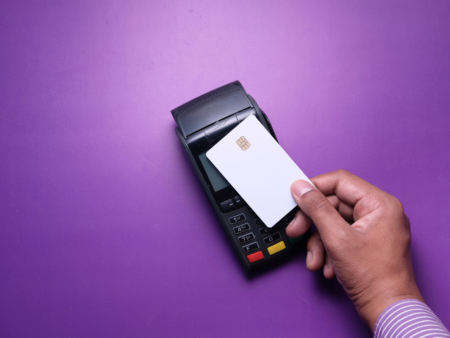With more data leaks, the cybersecurity landscape is changing, requiring proactive actions to reduce risks for individuals and organisations.
Data leaks and breaches are becoming increasingly common, which begs the issue of whether they could eventually become the new standard in the cybersecurity industry. Technology is advancing so quickly that fraudsters now have more opportunities to take advantage of flaws and obtain unauthorised access to vital data.
Despite the fact that data leaks happen frequently, there are proactive steps that people and organisations may take to reduce the risk.
Data Breach Frequency
Sensitive information that is accessed, disclosed, or taken without authority is referred to as a data leak, sometimes called a data breach. These breaches may affect bank records, intellectual property, personal information, and other types of data. Over the past ten years, there has been an upsurge in the number and severity of data breaches.
One reason for the rise in data breaches is the greater digitization of information. Online data has increased dramatically as more and more consumers and organisations rely on digital platforms and cloud storage. The shift to digital has given criminals more opportunities to take advantage of holes in systems and gain unauthorised access to data

The Most Typical Sources of Information Leaks
Many factors can lead to data leaks, such as:
- Cyberattacks: One of the main causes of data breaches is advanced cyberattacks like phishing and ransomware. Attackers use a range of strategies to break into networks, steal passwords, and obtain sensitive information.
- Human error: Inadvertent actions by employees or other individuals frequently lead to data breaches. This includes unintentionally sharing personal information, falling for phishing schemes, and configuring security settings incorrectly.
- Fraudsters can take advantage of weaknesses in cybersecurity safeguards, such as weak passwords, out-of-date software, and insufficient encryption.
- Vulnerabilities Associated with Third Parties: Organisations often exchange data with outside partners and suppliers. These companies’ inadequate security procedures could leave sensitive data vulnerable to intrusions.
Is it a tolerable danger, or is this the new normal?
Although the frequency of data breaches might point to a concerning pattern, it is important to look at this problem from the standpoint of cybersecurity. Data breaches are a hot topic since they can cause damage to one’s finances and reputation. As a result, managing cybersecurity threats is becoming more proactive for both individuals and enterprises.
Effective cybersecurity protocols, threat detection technologies, and incident response techniques have developed to reduce the impact of data breaches. Furthermore, strict data protection laws have been passed by regulatory bodies all over the world. Examples of these are the California Consumer Privacy Act (CCPA) in the US and the General Data Protection Regulation (GDPR) in Europe. These rules impose legal obligations on businesses to safeguard customer information and promptly notify security breaches.
Lower the Risk of Data Leaks
Even if data leaks are still a concern, people and organisations can reduce their risk in several ways:
- Instruct and prepare personnel and individuals: Spend money on cybersecurity education and awareness initiatives. Instruct them on how to recognise phishing attempts, create secure passwords, and follow best practises for data protection.
- Put Strong Authentication Into Practise: Whenever possible, make multi-factor authentication (MFA) mandatory. By requiring users to provide several forms of identity before being granted access to systems or data, MFA improves security.
- Update Software Regularly: Maintain the most recent versions of all software, including operating systems, antivirus software, and applications. Updates for software often contain security patches that fix known vulnerabilities.
- Encrypt Critical Information: Encrypt critical information both at rest and in transit. When information is transformed into a format that cannot be read without the required decryption key, it is said to be encrypted.
- Surveillance of Network Activity: Utilising intrusion detection systems and security information and event management (SIEM) solutions, keep an eye out for any unusual activity on the network. Investigating any anomalies as soon as feasible is advised.
- Backup Data: Ensure that important data is regularly backed up to secure off-site locations. This guarantees the possibility of data restoration in the event of a ransomware attack or data breach.
- Adopt Least Privilege Access: Grant only those who require it for work access to data and systems. Use the least privilege principle to lessen the possible harm that insider threats may create.
- Perform Security Audits: Evaluate and audit the cybersecurity posture of your company on a regular basis. Determine your shortcomings and address them as soon as you can.
- Establish a regular incident response policy for data breaches in your company. This plan should include communication, containment, and notice for affected parties and regulators.
The Role of Cybersecurity Professionals
Because data leaks are still an issue, there is a growing need for cybersecurity expertise in this dynamic and ever-evolving field. Organisations are increasingly hiring experts to manage incident response, penetration testing, and the design and implementation of comprehensive security measures.
Experts in cybersecurity play a vital role in helping businesses remain ahead of cyberattacks. They are responsible for discovering vulnerabilities, monitoring for harmful activities, and developing procedures to protect sensitive data. In this dynamic environment, their experience plays a vital role in reducing the likelihood of data breaches.
Concerned EU Cybersecurity Experts Support Revising Vulnerability Disclosure Rules
Cybersecurity professionals have written an open letter to EU lawmakers requesting that a key provision of the Cyber Resilience Act regarding vulnerability disclosure requirements be reexamined in the wake of the most recent Microsoft data leak.
In order to create cybersecurity guidelines, such as required security updates and vulnerability management for Internet of Things devices with data gathering and sharing capabilities, the European Commission unveiled the CRA in September 2022.
Organisations would have to notify government bodies of software vulnerabilities as soon as they are discovered, under the proposed Act. Experts in cybersecurity, however, contend that such revelations might have a negative impact on consumers’ and digital product security. The letter’s signatories, who include Ciaran Martin, a professor and the former head of the UK National Cyber Security Centre, stressed that although the vulnerability disclosure clause has to be reevaluated, the CRA is crucial for enhancing cybersecurity in Europe.
The experts voiced concerns that EU policymakers may have misunderstood the information flow essential to address vulnerabilities effectively. They advised against forcing organisations to reveal vulnerabilities before impacted suppliers had a chance to develop and test patches, as governments are ill-equipped to do so. Moreover, they voiced worries about government access to real-time databases of unpatched vulnerabilities, which may become targets for hostile actors.
The experts also cautioned against potential dangers such as researchers being dissuaded from reporting vulnerabilities and databases being misused for surveillance reasons. They recommended that nations follow the International Standardisation Organization’s vulnerability handling procedures as a global standard.
In the end
Although they are more frequent in today’s digital environment, data breaches are not inevitable. Businesses and individuals can significantly reduce their risk of data breaches by combining technology investment, cybersecurity expertise, and proactive actions. The objective is to approach cybersecurity as an ongoing endeavour.











